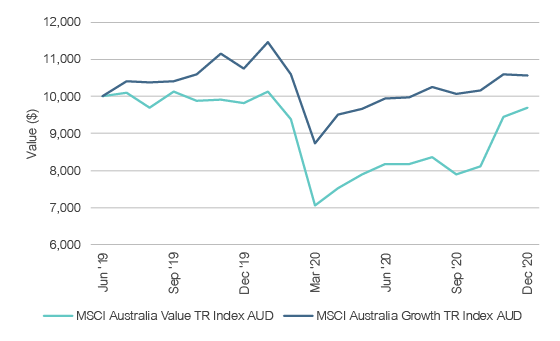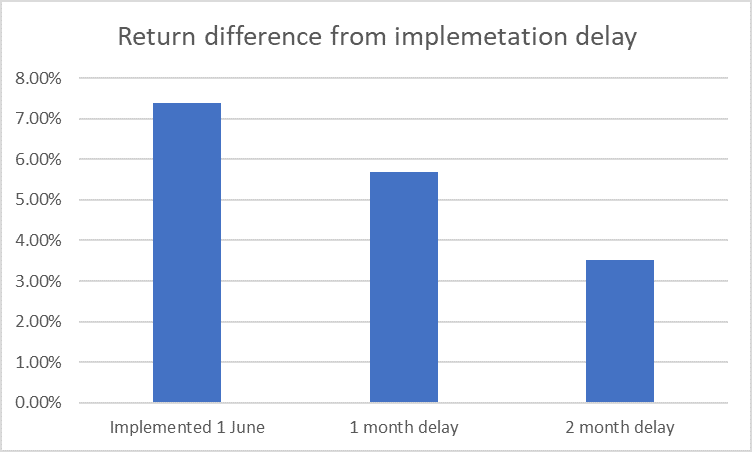Debate in global property markets is now focused on office markets and how the global pandemic may have changed demand for office space on a permanent basis. In Australia, the immediate impact has seen CBD office vacancy levels rise in Sydney and Melbourne from 3.0–4.0% to around 8.0–9.0% over the year to January 2021.
Net absorption for Australia overall has reduced from +50,000 sqm in the six months to January 2020 to -90,000 sqm in the latest six months to January 2021. Sub-leasing levels have spiked as tenants with longer leases look to offload spare capacity. While face rents have remained largely unchanged, incentives have jumped to over 35% compared to around 25% pre-pandemic, dampening net effective rents.
The return to work in CBDs is progressive, but there is a growing realisation that more flexibility to allow working from home arrangements is both possible and desired. As corporates plan ahead and leases come to an end, already there is demand for core space plus an option for a flexible amount. Landlords will also need to ensure that buildings provide good quality space (including high environmental ratings) with facilities being upgraded in line with social distancing requirements.
While there will be some requirement for more space per person, it is likely that the trend for more flexible space and working from home arrangements will drag on demand while the world works its way through this pandemic. Given there is the possibility of more pandemics in the future, the outlook for office space will have a higher degree of uncertainty. A bright spot is medical and life sciences office space, where demand has been boosted by pandemic conditions.
Property sector will keep evolving
In the March quarter 2021 Australian property securities lost ground (S&P/ASX 300 A-REIT Index -0.5%) to the broader Australian equities index (+4.3%), although a stronger March almost made up for a poor first two months of the new year. Conversely, global property securities – AUD hedged (+7.3%) outperformed global equities – AUD hedged (+6.1%) during the first quarter of 2021.
Healthcare property continues to evolve with limited listed opportunities in Australia but increasing activity in unlisted funds. The highlight during the last quarter was the bid for Australian Unity Healthcare Property Trust by Canadian-based NorthWest Healthcare, with two conditional bids being rejected by Australian Unity as significantly undervaluing the patiently accumulated portfolio (December 2020 value was $2.4 billion) plus the ongoing development potential.
Heavily sold off early in 2020, retail property REITs have had bursts of recovery during the last six months as investors reacted to a vaccine-led recovery. Food and necessity-based shopping centres have continued to trade well and remain in demand by investors. Shopping strips and malls with a high proportion of discretionary spending have been hard hit, and owners face a period of readjustment in tenant mix and rentals. Nevertheless, in countries where lockdowns have lifted, foot traffic has rapidly returned to the ‘fortress’ shopping centres.
Secondary market for residential property expected to stabilise
A surprising area of strength is the residential market in Australia and some other parts of the globe where the COVID-19 response has been well handled (e.g. New Zealand). The combination of the RBA announcing that interest rates would stay low for a number of years and a shortage of supply in the secondary market has seen prices escalate quickly. This seems at odds with the underlying economic conditions in Australia where government income support (i.e. JobKeeper) has now ended and banks require mortgages to be serviced after a brief hiatus for those in need.
Lonsec expects some stabilisation to occur in pricing for the secondary housing market as these factors take hold and supply increases. Developers of primary housing stock will reap the benefits in the near term, although the apartment market is softer as demand is weak (no international buyers or renters) and rentals are about 20% lower than the pre-pandemic level. While values in regional and coastal areas have reacted to the work from home trend, this is also a reflection of relative value compared to the capital cities.
The residential rental and manufactured housing sectors are well developed internationally and have shown their resilience with a high proportion of recurring income from a multitude of tenants, although these sectors are not immune from some impact of a pandemic. Student housing is a good example, where travel restrictions have seen international student occupancy at very low levels. Longer-term trends of demand for high quality education should see these businesses recover in due course.
Property subsector winners include the Industrial and logistics and data centre sectors as growth continues off the back of accelerating trends towards e-commerce. However, pricing of assets in this area has become historically expensive and investors need to tread carefully to ensure the properties have tenants that are tied in not only by long leases, but by specialised fit-outs (preferably tenant funded). Similarly, hotels and lodging earnings are set to benefit as intra-national travel restrictions are eased and are dependent on how international travel patterns pan out.
A key positive that remains in place is low interest rates globally, which are having the impact of maintaining investor demand and underpinning tight market capitalisation rates (apart from discretionary retail assets). Lonsec maintains the view that these policy settings are artificially low, and as inflation resurfaces, bond rates and borrowing costs will rise (the US 10-year rate rose from 0.72% in October 2020 to 1.85% at the end of March 2021).
At this stage, REITs remain reasonably geared and investors should steer away from companies starting to push these boundaries. At the same time, highly priced property groups with components of funds management and development earnings can be vulnerable to a reversal of asset values.
Issued by Lonsec Research Pty Ltd ABN 11 151 658 561 AFSL 421 445 (Lonsec). Warning: Past performance is not a reliable indicator of future performance. Any advice is General Advice without considering the objectives, financial situation and needs of any person. Before making a decision read the PDS and consider your financial circumstances or seek personal advice. Disclaimer: Lonsec gives no warranty of accuracy or completeness of information in this document, which is compiled from information from public and third-party sources. Opinions are reasonably held by Lonsec at compilation. Lonsec assumes no obligation to update this document after publication. Except for liability which can’t be excluded, Lonsec, its directors, officers, employees and agents disclaim all liability for any error, inaccuracy, misstatement or omission, or any loss suffered through relying on the document or any information. ©2021 Lonsec. All rights reserved. This report may also contain third party material that is subject to copyright. To the extent that copyright subsists in a third party it remains with the original owner and permission may be required to reuse the material. Any unauthorised reproduction of this information is prohibited.






